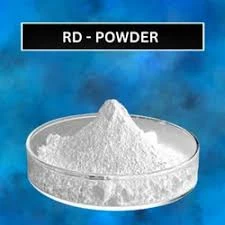
Dec . 17, 2024 17:44 Back to list
Solubility of HPMC in Methanol and Its Implications for Pharmaceutical Applications
Investigating the Solubility of HPMC in Methanol A Comprehensive Overview
Hydroxypropyl methylcellulose (HPMC) is a widely used polymer in various industries, particularly in pharmaceuticals, food, cosmetics, and construction. Its exceptional properties, such as film-forming ability, thickening, and protective colloid characteristics, make it a valuable ingredient in many formulations. One critical aspect that affects the application of HPMC is its solubility in different solvents, including methanol. This article aims to explore the solubility of HPMC in methanol, the factors influencing this solubility, and the implications of these characteristics in practical applications.
Understanding HPMC
HPMC is a semi-synthetic polymer derived from cellulose, a natural polymer found in plant cell walls. The modification of cellulose through hydroxypropylation and methylation enhances its solubility in organic solvents and water. The degree of substitution (DS) of hydroxypropyl and methoxy groups affects the behavior of HPMC in solvents. HPMC is characterized by its ability to form clear, viscous solutions, making it an essential component in various formulations.
Solubility of HPMC in Methanol
Methanol, a polar solvent, is commonly used in chemical processes due to its ability to dissolve a wide range of compounds. The solubility of HPMC in methanol is influenced by several factors, including temperature, molecular weight of HPMC, and the specific grade of HPMC being used.
1. Temperature Effects Generally, increasing the temperature results in enhanced solubility for most polymers, including HPMC. This occurs due to the increased kinetic energy of molecules at higher temperatures, leading to greater interactions between the HPMC molecules and methanol. For various grades of HPMC, the temperature can significantly influence the rate and extent of solubilization.
2. Molecular Weight The molecular weight of HPMC plays a crucial role in its solubility. Lower molecular weight HPMC tends to dissolve more readily in methanol compared to higher molecular weight variants. This is attributable to the larger chains of high molecular weight HPMC, which may entangle and impede the dissolution process. Thus, when choosing HPMC for methanol-based applications, considering the molecular weight is essential for optimal solubility.
hpmc solubility in methanol

3. HPMC Grade Variability HPMC is available in different grades, such as HPMC K (hydroxypropyl methylcellulose K) and HPMC E (hydroxypropyl methylcellulose E), each with distinct properties and solubility profiles. Grades with different degrees of substitution and viscosity characteristics exhibit varying degrees of solubility in methanol. This grade-dependent solubility must be taken into account when formulating products that involve methanol as a solvent.
Applications and Implications
Understanding the solubility of HPMC in methanol has significant implications for various industries. In pharmaceuticals, for instance, HPMC is often used as a drug delivery agent and is crucial in controlling the release of active pharmaceutical ingredients (APIs). The solubility properties of HPMC directly influence the release profiles and efficacy of drug formulations.
In the food industry, HPMC serves as a thickening agent, stabilizer, and emulsifier. Knowing its behavior in methanol can guide formulation processes where methanol is used in extraction or processing phases. For instance, beverage manufacturers may utilize HPMC to enhance texture and mouthfeel, relying on optimal solubility in different solvents.
Furthermore, the construction industry benefits from HPMC’s properties in cement and mortar formulations. Its ability to enhance workability and water retention is critical to ensuring the longevity and durability of construction materials.
Conclusion
The solubility of HPMC in methanol is a complex phenomenon influenced by various factors such as temperature, molecular weight, and the specific grade of HPMC used. This characteristic is not only crucial for its applications across different industries but also for the efficiency and effectiveness of formulations. Continued research and analysis of HPMC's solubility behavior in methanol will further enhance our understanding and utilization of this versatile polymer in practical applications. As industries continue to evolve, the role of HPMC remains pivotal, making it essential to grasp the intricacies of its solubility characteristics in methanol and other solvents.
-
Versatile Hpmc Uses in Different Industries
NewsJun.19,2025
-
Redispersible Powder's Role in Enhancing Durability of Construction Products
NewsJun.19,2025
-
Hydroxyethyl Cellulose Applications Driving Green Industrial Processes
NewsJun.19,2025
-
Exploring Different Redispersible Polymer Powder
NewsJun.19,2025
-
Choosing the Right Mortar Bonding Agent
NewsJun.19,2025
-
Applications and Significance of China Hpmc in Modern Industries
NewsJun.19,2025







